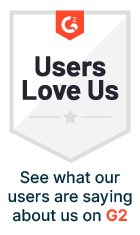
Developer backlog isn’t a new problem. Companies have an ever-increasing desire to connect applications, automate processes and sync data so they stay relevant, innovative and competitive. It is no longer enough to just have an API. Now a key purchase influencer is the easy integration ability with other services.
Your application can’t exist alone. How you address this directly impacts your long-term ability to win and retain customers. Therefore putting increased pressure on your in-house developers to create integrations at scale.
Software Developers previously wrote API-based custom code, spending weeks creating integrations that can’t be scaled and are hard to maintain. Their focus would continue to be on the pre-existing integrations rather than creating new ones. Thus resulting in a backlog of integration requests. Building and maintaining integrations also means that developers aren’t focused on further building out their core product or offering. Steering them off the long-term roadmap the company laid out.
Companies are looking for solutions to not only reduce developer backlog but also increase their digital transformation. Low code and no code tools are aiding the digital transformation process. Gartner has predicted that “by 2024, three-quarters of large enterprises will be using at least four low-code development tools for both IT application development and citizen development initiatives”.
Who are Citizen Developers and how can they help developer backlog?
Gartner believes that ‘anyone can be a developer, and has defined a citizen developer as a user who creates new business applications for consumption by others using development and runtime environments sanctioned by corporate IT.
Within this environment, the citizen developer is able to use drag-and-drop applications to connect APIs together, in order to generate a new unique integration or application.
This low-code and no-code software empower a wider workforce to design and build new applications. These can scale and adapt according to the needs of the business and or customer.
Citizen developers are able to recognise business needs and act as solution architects, able to come up with several solutions for a single problem.
What tools/systems could be used to reduce developer backlog?
Citizen developers can use tools such as an embedded iPaaS (integration platform as a service). It is a centralised platform designed to specifically integrate all the applications in your business with a centralised approach. Embedded iPaaS solutions allow SaaS vendors to create, manage and deploy self-service integrations from their own platform. An embedded iPaaS can provide the opportunity for SaaS vendors to rapidly expand their integration offerings, without adding to their developer backlog.
An iPaaS platform brings integrations to other team members, utilising their citizen developers, and widening their workforce by upskilling employees. They then can resolve key integration sticking points. For instance, API versioning and updating, individual integration maintenance, integration being a developer-only task, and the handling and maintaining of multiple API and authentication types.
Citizen integrators can design, build and execute integrations for customers much faster, and reduce developer backlog.
Tools of a similar vein include hpaPaaS (high productivity application platform as a service). Defined by Gartner, refers to rapid application development platforms, providing business developers with the tools to build enterprise applications rapidly. They offer a service with one-button deployment and have overlapping capabilities with low code that can be interchangeable.
iSaaS (integration software as a service), on the other hand, are cloud-based integration tools. They provide either prepackaged or easily configurable integration flows aimed at helping non-IT business users and consumers to address simple application & data integration issues. These offerings are typically cloud-hosted, targeted at citizen integrators and easy to use.
Low Code and No Code Tools and their benefits
These tools used by citizen integrators have transformed integration and the application development process by enabling faster development. Companies have not only seen the benefit of faster turnaround times, but by encouraging existing employees to upskill they don’t need to hire expensive software developers. Furthermore, by implementing low-code and no-code tools, businesses are broadening their number of employees who can help in the digital transformation of the company.
Low-code and no-code platforms have also fostered greater collaboration between internal departments. This has become a way of bringing the business side into the development process so that the final outcome reflects the business’s specific goals.
Other benefits of these tools include the ease of building interfaces using drag-and-drop editors. The ability to create workflows and business processes and deliver interfaces to create integrations with third-party systems for consuming and pushing data. Depending on the embedded platform there is a wide range of pre-built connectors. Also, if needed, the ability to request custom connectors or code to extend the functionality of your business.
Low code and no code tools, used by citizen developers let you innovate faster, and better and ultimately help to reduce developer backlog.
